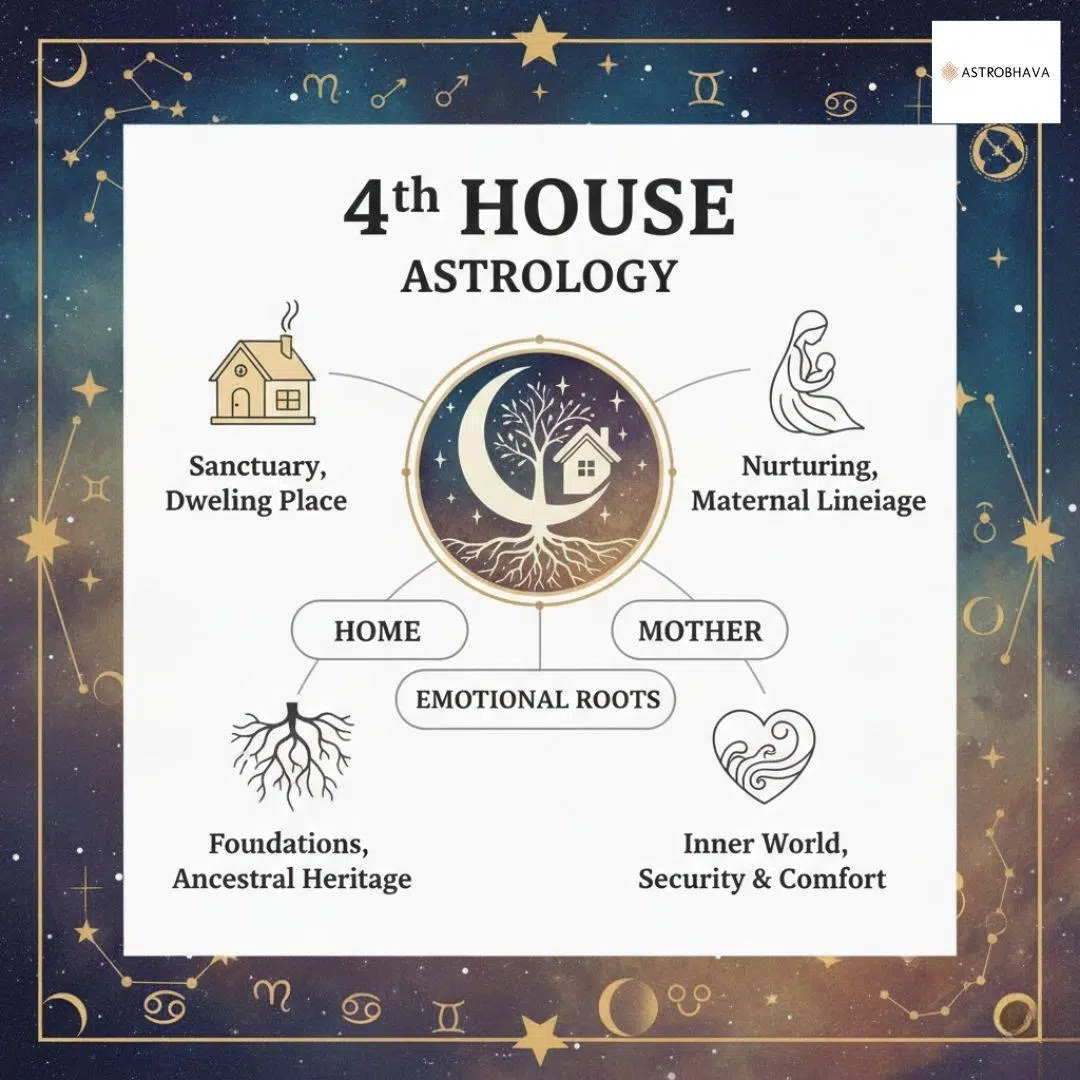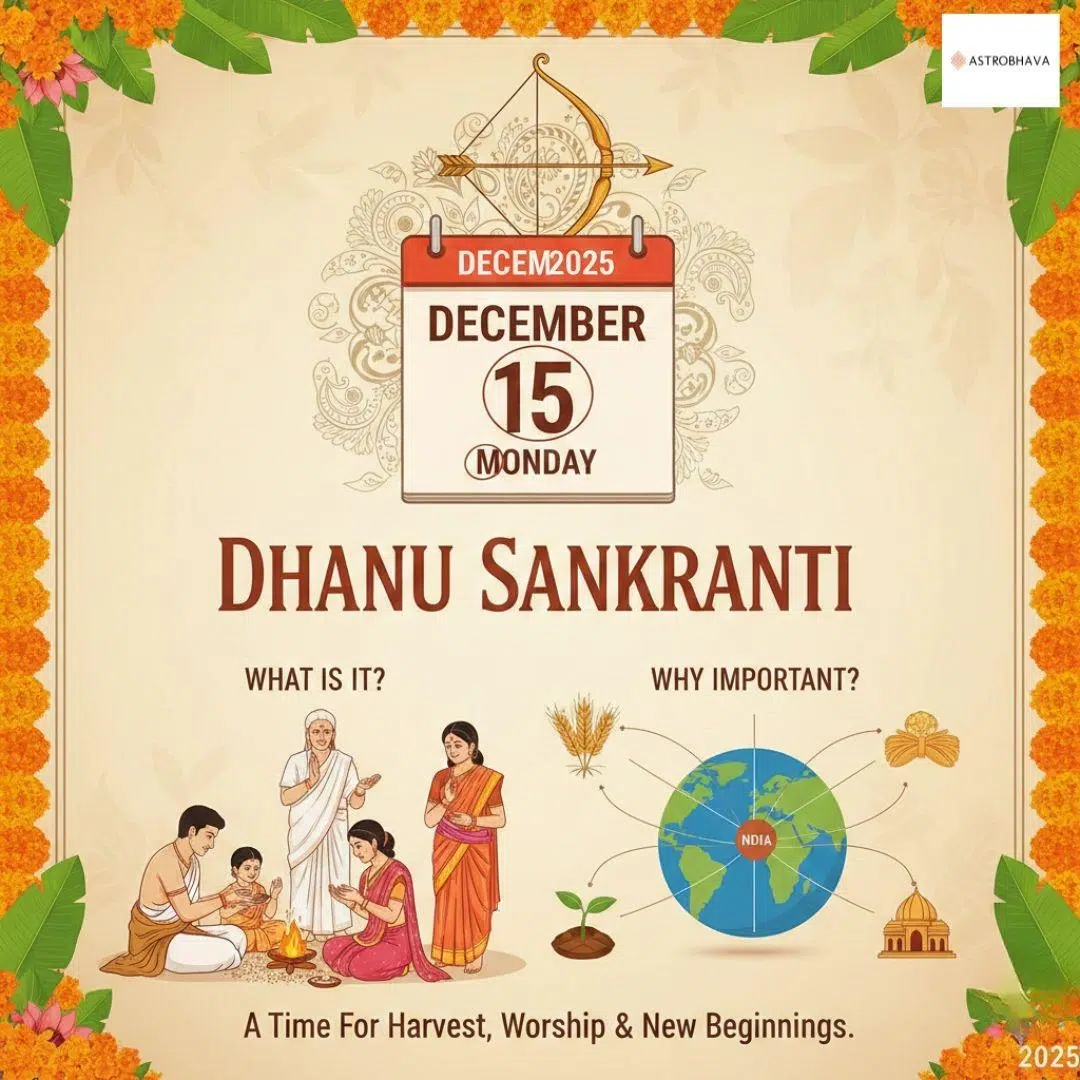Unlock the Power of Kushmanda Devi: 4th Day of Navratri

Navratri, the grand festival of nine nights, is dedicated to the nine divine forms of Goddess Durga, each representing unique energies and blessings. The fourth day of Navratri is devoted to Goddess Kushmanda, the cosmic mother who is believed to have created the universe with her divine smile. Worshipping her on this day bestows devotees with health, prosperity, and positive energy. Let’s explore the significance, rituals, and benefits of invoking Maa Kushmanda on the 4th day of Navratri.
Who is Kushmanda Devi?
The name Kushmanda is derived from three Sanskrit words:
- Ku (little),
- Ushma (warmth or energy), and
- Anda (cosmic egg).
This signifies that Goddess Kushmanda is the divine energy that created the universe with her smile. She is depicted as a radiant deity with eight arms, holding a kamandalu (sacred water pot), bow, arrow, lotus, chakra, mace, rosary, and a jar of nectar. She rides a lion, symbolizing courage and strength.
Maa Kushmanda resides in the core of the Sun, and her energy fuels the entire solar system. She grants light, vitality, and prosperity to her devotees and removes darkness from their lives.
The Legend of Kushmanda Devi
At the beginning of time, when there was only darkness and void, no light, no creation, and no beings, Kushmanda Devi emerged from the cosmic void. With her divine smile, she emitted a powerful, radiant light that illuminated the entire universe. This light led to the formation of the Sun, planets, and all cosmic elements.
Since she created the universe with her gentle smile, she is called Kushmanda (Ku = little, Ushma = warmth, Anda = cosmic egg). This signifies that she is the primordial source of energy and the very essence of creation.
To sustain and govern the universe, she created three divine beings:
- Mahadev (Shiva) – representing destruction and transformation.
- Vishnu – the preserver and sustainer of the universe.
- Brahma – the creator of knowledge and existence.
She then infused her energy into the Sun, making it the center of cosmic power. This is why Kushmanda is believed to reside within the core of the Sun, controlling its heat and energy. Her divine energy ensures the balance of life and allows the universe to function harmoniously.
“Chant the sacred Surya mantras to awaken vitality, confidence, and inner strength. Let the divine energy of the Sun illuminate your path to success and well-being. Start your Surya Japa today and radiate positivity!”
Kushmanda as the Goddess of Strength
She is depicted as a radiant goddess with eight hands, holding weapons, a rosary, and a kalash (sacred pot) filled with nectar, signifying power, knowledge, and abundance. She rides a lion, symbolizing courage and strength.
Iconography and Symbolism of Kushmanda Devi
Kushmanda Devi, the fourth form of Navadurga, is a radiant and divine goddess associated with creation, energy, and vitality. Her iconography holds deep symbolic meanings that reflect her power and grace.
1. Radiant Appearance and Divine Glow
- Kushmanda Devi is often depicted with a radiant aura around her, symbolizing her role as the creator of the universe.
- She is believed to reside in the Sun, controlling its energy and heat.
- Her divine smile signifies joy, positivity, and the power to create from nothingness.
2. Eight-Armed Goddess (Ashtabhuja Devi)
She is depicted with eight arms, each carrying significant objects that represent different aspects of divine power:
| Weapon/Object | Symbolism |
| Trident (Trishul) | Power, destruction of evil |
| Discus (Chakra) | Divine energy, dharma (righteousness) |
| Sword (Khadga) | Strength, protection from negativity |
| Bow and Arrow | Focus, determination, and willpower |
| Mace (Gada) | Authority, knowledge, and discipline |
| Rosary (Japa Mala) | Spiritual wisdom, meditation, and devotion |
| Kamandalu (Water Pot) | Purity, life-giving energy |
| Amrit Kalash (Pot of Nectar) | Health, immortality, and prosperity |
The combination of weapons and sacred objects represents her ability to protect, create, and sustain life while also guiding devotees toward spiritual growth.
3. Lion as Her Vehicle (Vahana)
- She rides a lion, which symbolizes courage, strength, and fearlessness.
- The lion represents her ability to conquer fear and darkness, guiding her devotees with power and wisdom.
Significance of Worshipping Kushmanda Devi
Kushmanda Devi is revered as a powerful and benevolent aspect of the Divine Mother, often regarded as a manifestation of Goddess Durga. Here are some key points regarding the significance of worshipping Kushmanda Devi:
- Cosmic Energy and Creation:
Kushmanda is believed to have created the universe with just her smile, symbolizing the birth of the cosmos from a small yet potent spark of divine energy. Her worship reminds devotees of the creative power inherent in every being.
- Source of Vitality and Prosperity:
As the energizer of the universe, she is considered the source of life and vitality. Devotees often seek her blessings for physical, mental, and spiritual strength, as well as overall prosperity and well-being.
- Symbol of Inner Light:
Worshipping Kushmanda Devi encourages one to look within and recognize the divine spark that resides in every individual. Her radiant smile symbolizes the inner light and joy that can overcome darkness and adversity.
- Healing and Transformation:
Her energy is associated with healing and transformation. Devotees believe that her blessings can help dispel negative energies, leading to emotional and physical healing, and ultimately, spiritual growth.
- Feminine Divine Power:
As a form of the Divine Mother, Kushmanda represents the nurturing and protective aspects of the feminine. Worshipping her fosters qualities such as compassion, strength, and resilience.
- Cultural and Spiritual Significance:
In many Hindu traditions, especially during festivals like Navaratri, the worship of the Divine Mother in her various forms (including Kushmanda) reinforces the balance of cosmic energies. Her worship is not only a ritual but also a reminder of the cyclical nature of life, creation, and rebirth.
In essence, worshipping Kushmanda Devi is an invitation to connect with the energy that pervades the universe, fostering inner strength, creativity, and a deeper understanding of one’s true self. It is a celebration of both the cosmic and personal aspects of creation, inviting devotees to embrace life with renewed energy and optimism.
“Celebrate the fierce compassion of Goddess Durga through Durga Puja! Dedicate your prayers and offerings to the mighty Durga, seeking strength, protection, and the courage to overcome challenges. Embrace her divine energy and transform your journey today!”
How to Worship Kushmanda Devi on the 4th Day of Navratri
1. Early Morning Rituals
- Wake up early, bathe, and wear yellow or orange clothes, as these colors symbolize energy and positivity.
- Clean your puja space and place an idol or picture of Kushmanda Devi.
- Offer fresh flowers, kumkum, chandan, and akshat (rice grains) as a symbol of devotion.
2. Offerings and Prayers
- Mantra: Chant the following mantra 108 times for divine blessings:
ॐ देवी कूष्माण्डायै नमः॥
Om Devi Kushmandayai Namah॥ - Offerings: Present marigold flowers, coconut, fruits, honey, ghee, and sweets to the Goddess.
- Bhog (Prasad): Offer malpua or pumpkin-based dishes, as they are believed to be her favorite.
- Light a diya (lamp) and incense sticks while chanting hymns.
- Recite the Durga Saptashati (Chapter 4) to invoke her divine presence.
3. Meditation and Aarti
- Meditate on Maa Kushmanda’s divine form and seek her blessings.
- Conclude with Navratri Aarti, seeking health, prosperity, and happiness.
Worshipping Kushmanda Devi through Puja, Japa and Homa
Worshiping Kushmanda Devi can be a deeply transformative spiritual practice. Devotees often engage in Puja (ritualistic worship), Japa (chanting of mantras), and Homa (sacred fire ritual) as dedicated methods to connect with her divine energy. Here’s how each practice contributes to invoking her blessings:
1. Puja (Ritual Worship)
- Setting Up an Altar:
Create a clean and sacred space by setting up a small altar with an image or idol of Kushmanda Devi. Decorate it with fresh flowers, incense, and lamps to invoke a divine ambiance.
- Offerings:
Offer items such as fruits, sweets, water, and symbolic items like the kalash (sacred pot) or rosary beads. These offerings represent your devotion, gratitude, and surrender to her cosmic energy. - Mantra Recitation and Prayer:
Recite specific mantras dedicated to Kushmanda Devi. Chanting these mantras helps focus the mind and invoke her presence, allowing you to absorb her creative and energizing qualities. - Ritual Actions:
Perform traditional rituals like lighting a diya (oil lamp) and burning incense, which symbolize dispelling darkness and inviting divine light. Each gesture during the puja represents the surrender of ego and a step towards spiritual awakening.
“Invoke cosmic energy with a heartfelt Kushmanda Puja! Create your sacred space, offer your prayers and offerings, and connect with the goddess who birthed the universe with her smile. Experience the joy of devotion and the power of creation now!”
2. Japa (Chanting of Mantras)
- Choosing a Mantra:
Use the Kushmanda Devi mantra, or other mantras associated with her aspects, to deepen your meditative practice. The repetition of sacred sounds can create a rhythmic connection with the divine.
- Using a Japa Mala:
A rosary (japa mala) can be used to count your recitations. This aids concentration and helps maintain a steady rhythm, fostering a meditative state where you can focus on her cosmic energy.
- Benefits of Japa:
- Calmness and Clarity: Repeating mantras helps quiet the mind and dispel negative thoughts.
- Inner Transformation: Japa serves as a tool for introspection and aligning your inner energies with those of the goddess.
- Connection with Divine Energy: With each repetition, you invite Kushmanda Devi’s energy, invoking creativity, health, and strength.
“Awaken your inner radiance—start your Kushmanda Japa today! Begin your day with the sacred mantra “Om Kushmande Namaha” and let the cosmic energy of creation infuse every moment. Embrace the divine light within and transform your life!”
3. Homa (Sacred Fire Ritual)
- Setting Up the Homa Kund:
Prepare a clean and sacred fire altar (homa kund) in a quiet space. Ensure you have all necessary materials such as ghee (clarified butter), sacred herbs, and other traditional offerings.
- Performing the Ritual:
- Invocation: Begin by invoking the presence of Kushmanda Devi and other deities through the recitation of appropriate hymns and mantras.
- Offerings to Fire: Carefully offer ghee, herbs, and other materials into the fire. The flames symbolize purification and the transformative energy of the goddess.
- Chanting and Meditation: Continue chanting her mantras while focusing on the fire. The ritual process is believed to purify the environment, remove negativity, and manifest positive energy.
- Invocation: Begin by invoking the presence of Kushmanda Devi and other deities through the recitation of appropriate hymns and mantras.
- Spiritual Significance:
The homa ritual acts as a medium to connect with the primal energy of the universe. It signifies the transformation of material offerings into spiritual merit and reinforces the belief in the divine energy that Kushmanda Devi represents.
Engaging in these practices with sincerity and devotion helps establish a strong spiritual connection with Kushmanda Devi. Whether through the intimate setting of a puja, the meditative rhythm of japa, or the transformative power of homa, each practice allows devotees to:
- Invoke the goddess’s creative energy.
- Bring light into their lives.
- Foster inner growth, balance, and positivity.
By incorporating these rituals into your spiritual practice, you not only honor Kushmanda Devi but also embrace the cosmic energy that she embodies, paving the way for physical, mental, and spiritual well-being.
“Ignite transformation with the sacred Kushmanda Homa! Participate in this purifying fire ritual, and let the divine flames consume negativity while fueling your life with energy, prosperity, and divine warmth. Step into the sacred circle of light today!”
Powerful Benefits of Chanting Kushmanda Devi Mantras
- Increases Energy and Strength: Her mantra boosts stamina and removes fatigue.
- Brings Clarity and Wisdom: Chanting her name enhances decision-making abilities.
- Attracts Abundance: Devotees experience financial growth and stability.
- Eliminates Sins and Karmic Blockages: Helps clear past karma and removes obstacles.
- Heals the Body and Mind: Enhances mental peace and reduces stress.
- Promotes Spiritual Growth: Strengthens inner resilience and deepens faith.
The Connection Between Kushmanda Devi and Astrology
Maa Kushmanda’s blessings are particularly beneficial for those facing challenges related to:
- Weak Sun in their horoscope (leading to low confidence and lack of vitality)
- Career struggles and financial instability
- Health issues related to energy imbalances
- Lack of motivation or leadership skills
Performing dedicated pujas and homas under expert guidance can amplify her blessings.
“Experience purification and divine transformation with Durga Homa! Let the sacred fire ritual purify your surroundings and heart, inviting Goddess Durga’s blessings of resilience, protection, and inner strength. Begin your journey towards spiritual renewal now!”
Lessons to Learn from Kushmanda Devi
The story and symbolism of Kushmanda Devi offer deep spiritual and practical lessons that can guide us in our daily lives. Here are some key lessons to learn from her:
1. The Power of Positivity
Kushmanda Devi created the universe with her smile, symbolizing the immense power of positivity. Even in the darkest times, a single smile or positive thought can create something great. Optimism and inner joy can lead to transformation and new beginnings.
2. Inner Strength and Resilience
She is believed to reside in the core of the Sun, controlling its energy. This teaches us that true strength comes from within. No matter how challenging life gets, if we have inner resilience and self-belief, we can shine like the Sun.
3. Creation Begins with Small Efforts
Her name, Kushmanda, means “a little warmth and a cosmic egg.” It signifies that even the smallest action or effort can lead to great things. Just as the universe began with a spark, our journey starts with small steps toward our goals.
4. Balance of Power and Compassion
She is depicted with eight hands holding weapons and divine objects, showing that power should be balanced with wisdom and kindness. True leadership is not just about strength but also about nurturing and guiding others.
5. The Importance of Energy and Hard Work
Since she governs the Sun’s energy, she teaches us the value of hard work, discipline, and perseverance. Just as the Sun tirelessly provides light and warmth, we must put in consistent effort to achieve success.
6. Overcoming Darkness with Light
Before creation, there was only darkness. Kushmanda Devi brought light and life to the universe. This reminds us that no matter how difficult our situation is, we have the power to bring light into our own lives and others’ lives through knowledge, kindness, and determination.
7. Self-Reliance and Confidence
As the creator of the universe, Kushmanda Devi represents independence and self-sufficiency. She teaches us to believe in ourselves and our ability to shape our destiny.
8. Nurturing and Providing for Others
She carries a kalash (sacred pot) filled with nectar, symbolizing abundance and nourishment. This teaches us to share our blessings with others and contribute to the well-being of those around us.
9. Spiritual Growth and Wisdom
Her rosary represents meditation and spiritual knowledge. She reminds us that while material success is important, true fulfillment comes from spiritual growth and self-awareness.
10. Embracing Change and Transformation
Just as she transformed nothingness into creation, we must embrace change and be open to new opportunities. Growth and progress come when we step out of our comfort zones.
Conclusion: Seek Maa Kushmanda’s Divine Blessings with AstroBhava
Unlock the divine power of Maa Kushmanda by performing dedicated pujas, homas, and japa under the guidance of expert astrologers. AstroBhava offers personalized Navratri rituals, ensuring you receive the maximum spiritual and astrological benefits.
Book your Kushmanda Devi Puja now on AstroBhava and experience divine transformation.
Frequently Asked Questions (FAQs)
1. What should I offer to Kushmanda Devi?
You can offer marigold flowers, coconut, fruits, malpua, honey, and pumpkin-based dishes to seek her blessings.
2. What color should I wear on the 4th day of Navratri?
The best colors to wear are yellow or orange, symbolizing energy, strength, and positivity.
3. Can I chant Kushmanda Devi’s mantra at home?
Yes, you can chant Om Devi Kushmandayai Namah 108 times in the morning for health, confidence, and prosperity.
4. What is the best time to worship Kushmanda Devi?
Early morning during Brahma Muhurta (4 AM – 6 AM) is ideal, but puja can also be performed during Navratri evening aarti.
5. How does worshipping Kushmanda Devi impact astrology?
Maa Kushmanda governs the Sun in astrology. Worshipping her strengthens a weak Sun, enhancing leadership, confidence, and financial success.
6. Can Kushmanda Devi help in career growth?
Yes, her blessings improve confidence, leadership qualities, and decision-making, which are essential for career advancement.
7. Is fasting necessary while worshipping Kushmanda Devi?
Fasting is optional but recommended as it purifies the mind and body. You can observe a fruit-based or Satvik fast to honor the Goddess.
Worship Maa Kushmanda on the 4th day of Navratri and welcome health, wealth, and divine grace into your life. Join AstroBhava today and book your personalized Navratri puja for divine blessings.
Categories
- 10th House meaning
- 12th house astrology
- 12th House Moon meaning
- 1st house in astrology
- 2025 astrology
- 2025 festivals
- 2025 planetary movements
- 27 nakshatras
- 2nd house astrology finance
- 2nd house in astrology
- 2nd house in astrology explained
- 3rd house in astrology
- 4th house in astrology
- 9th house moon astrology
- abundance mantra
- Antardasha
- aries personality
- aries traits
- aries zodiac sign
- ascendant in astrology
- astro guide
- astro predictions 2025
- astro remedies
- astro tips
- Astrobhava
- Astrobhava astrology
- Astrobhava blog
- astrological effects
- astrological guidance
- astrological love compatibility
- Astrological love languages
- astrological planets
- Astrological Remedies
- astrology
- astrology 2025
- astrology 2026
- astrology 2nd house meaning
- astrology basics
- astrology benefits
- astrology calculator
- astrology career path
- astrology career prediction
- astrology compatibility
- astrology consultation
- astrology for business
- astrology for wealth
- astrology gemstones
- astrology guide
- Astrology Guides
- astrology houses
- astrology houses guide
- astrology insights
- astrology love guide
- astrology lucky color
- astrology predictions
- astrology remedies
- astrology remedies for job
- Astrology Remedies for Wellness
- astrology rituals
- astrology solutions
- astrology soulmate signs
- astrology sun planet
- astrology tips
- auspicious yogas
- Bhagavad Gita Jayanti
- birth chart
- birth chart analysis
- birth chart planets
- birth chart reading
- birth star matching
- business astrology
- business partnership astrology
- business success astrology
- career astrology
- Career Astrology & Personal Growth
- career astrology remedies
- career by nakshatra
- career growth remedies
- career stagnation remedies
- color astrology
- communication astrology
- communication planet
- compatibility chart
- Cosmology
- daily mantras
- Dasha
- dasha period calculator
- Dasha system
- Dhanu Sankranti 2025
- divine blessings
- dosha
- dosha remedies
- dreams interpretation
- dreams meaning
- Ekadashi benefits
- Ekadashi rituals
- Ekadashi vrat
- emotional astrology
- emotional compatibility
- emotional growth astrology
- emotional healing
- entrepreneurial astrology
- Festivals & Vedic Rituals
- financial astrology
- fire sign aries
- first house meaning
- fourth house meaning
- Gaja Kesari Yoga
- Gaja Kesari Yoga benefits
- gemstone astrology
- gemstone benefits
- Gita Jayanti 2025 astrology
- Gita Jayanti astrology
- hindu astrology
- Hindu calendar 2025
- Hindu fasting
- Hindu Festivals
- Hindu festivals 2025
- Hindu festivals astrology
- hindu rituals
- Homa and Fire Rituals (Yagna)
- home and family astrology
- horoscope
- horoscope 2025
- horoscope analysis
- horoscope colors
- horoscope correction
- horoscope guide
- horoscope insights
- horoscope matching
- horoscope reading
- horoscope remedies
- horoscope yoga benefits
- Indian astrology
- insightful trade
- Japa
- job astrology
- Jupiter Moon yoga
- kundli matching
- kundli reading
- lagna in astrology
- Latcharchana remedies
- list of 27 nakshatras
- lord of nakshatra
- love astrology
- love horoscope
- love match astrology
- lucky color for zodiac signs
- lucky gemstones
- lunar rituals
- lunar signs
- Mahadasha
- Mahadasha Calculator
- mahadasha effects
- Mahadasha periods
- Mahadasha prediction
- Mahadasha remedies
- mahadasha results
- Makar Sankranti
- manifestation mantras
- Mantra
- mantra chanting tips
- mantras for success 2026
- Margashirsha puja
- Margashirsha Purnima 2025
- Margashirsha rituals
- Marriage Auspicious Day
- marriage matching
- match making astrology
- Mercury direct 2025
- mercury direct meaning
- Mercury in astrology
- Mercury planet
- Mercury Retrograde
- Mercury Retrograde dates
- Mercury Retrograde effects
- mindset improvement
- Moon and profession
- Moon astrology
- Moon astrology insights
- Moon effects in astrology
- Moon house meaning
- Moon in 10th House
- Moon in 11th House
- Moon in 12th House
- Moon in 6th House
- Moon in 6th House effects
- Moon in 6th House remedies
- Moon in 7th House
- Moon in 7th House astrology
- Moon in 7th House effects
- Moon in 7th House love
- Moon in 7th House marriage
- Moon in 7th House meaning
- Moon in 7th House remedies
- Moon in 8th House
- moon in 8th house love
- moon in 8th house marriage
- moon in 9th house
- moon in 9th house effects
- Moon in Astrology
- moon in eighth house effects
- Moon in Eleventh House meaning
- moon in ninth house meaning
- Moon in Sixth House astrology
- Moon in tenth house career
- moon meaning
- Moon placement
- Moon placement in 7th House
- nadi astrology
- Nakshatra and Mahadasha
- nakshatra astrology
- nakshatra calculator
- nakshatra career guide
- nakshatra characteristics
- Nakshatra compatibility
- nakshatra guide
- nakshatra healing
- nakshatra job compatibility
- Nakshatra Lord
- nakshatra matching for marriage
- nakshatra meaning
- Nakshatra Remedies
- nakshatra ruler
- nakshatras
- natal chart analysis
- natal chart meaning
- numerology
- online astrology tool
- Panchami Festival
- partnership compatibility
- past karma
- past karma astrology
- personality in astrology
- Pilgrimage
- planet mercury meaning
- planetary dasha calculator
- planetary insights
- planetary mahadasha
- planetary periods
- planetary remedies
- planetary retrograde
- planetary transits 2025
- planets houses
- positivity rituals
- powerful astrology solutions
- powerful mantras
- Progency
- Puja & Rituals
- puja remedies
- Purnima 2025
- relationship astrology
- Relationships
- religious dates India
- remove career blockages
- retrograde meaning
- rudra puja
- Rudraksha and gemstone
- sankranti 2025
- Sankranti puja
- sankranti rituals
- Saphala Ekadashi 2025
- Saturn japa
- Saturn remedies
- saturn transit 2026 remedies
- shani dev mantra
- Shani dosha
- Shani japa benefits
- Shani mantra
- shani mantra 2026
- shani mantra benefits
- shani remedies
- Spiritual Astrology
- spiritual benefits
- spiritual growth
- Spiritual Guide
- spiritual healing
- Spiritual Practices and Chanting
- spiritual remedies
- Spiritual Rituals and Personal Empowerment
- spiritual significance
- Spiritual Tools & Personal Growth
- Spiritual Wellness and Protection
- Spirituality and Rituals
- Spirituality or Vedic Rituals
- star sign compatibility
- success mantras
- sun and zodiac signs
- Sun in Astrology
- sun in horoscope
- sun planet effects
- sun planet meaning
- sun power in astrology
- temple rituals
- transit astrology
- twin flame astrology
- Twin Flame Astrology Signs
- twin flame compatibility
- twin flame signs
- Utpanna Ekadashi 2025
- Utpanna Ekadashi dates
- Utpanna Ekadashi rituals
- Utpanna Ekadashi significance
- Vaikuntha Dwar
- Vaikuntha Ekadashi 2025
- Vastu Tips
- Vedic Astrology
- vedic astrology tools
- Vedic remedies
- Vivaah Panchami
- Vivaah Panchami Puja
- Vivaah Panchami Rituals
- Vivaah Panchami Significance
- vrat guide
- vrischik sankranti puja
- vrishchik rashi
- Vrishchik sankranti
- yantras
- yoga effects
- zodiac astrology
- zodiac colors meaning
- zodiac compatibility
- zodiac lucky colors
- zodiac moon traits
- zodiac relationships
- Zodiac Signs











